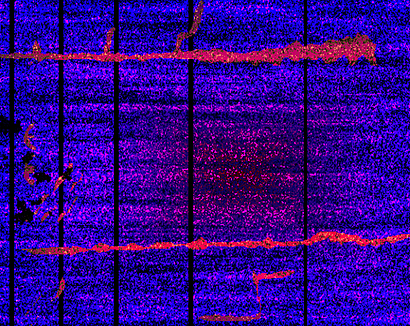Distributed Optical Sensing (DOS) utilises optical fibre as the sensor, effectively creating thousands of sensor points along the fibre, all acquiring continuously and instantaneously at the same time by sensing at the speed of light.
What is Distributed Acoustic Sensing (DAS)?

DAS is a DOS application, i.e. it works with optical fibre as a sensor. DAS uses a continuous acoustic sensor – effectively thousands of microphones – along the complete length of the fibre, recording the acoustic landscape around the well.
In DAS data, bangs, hisses and gurgles are acoustic events that consist of distinct characteristics or patterns that can be heard. Visually representing sound characteristics is critical to understanding the source of acoustic events.
What is DAS used for in the oil & gas industry?
Well integrity inspection, especially prior to well abandonment, currently mostly relies on logging tools that can only monitor the first casing-to-cement bond, not the cement-to-formation bond or any formation seal.
DAS can indicate turbulent fluid movements in the vicinity of a well and the surrounding cement and formation interface, even across several casing strings. This makes it an extremely valuable well integrity monitoring tool.
For more information on well structure, peruse our previous article.
What is Distributed Temperature Sensing (DTS)?
DTS is another DOS application. It is a continuous temperature sensor along the complete length of the fibre, recording the thermal landscape around the well.
During fluid movement an increase or decrease in temperature may be seen, especially in close proximity to the fibre. Disturbances or fluctuations in the temperature profile can be tracked, quantified and related back to the source and cause of the fluid movement.

You must be logged in to post a comment.